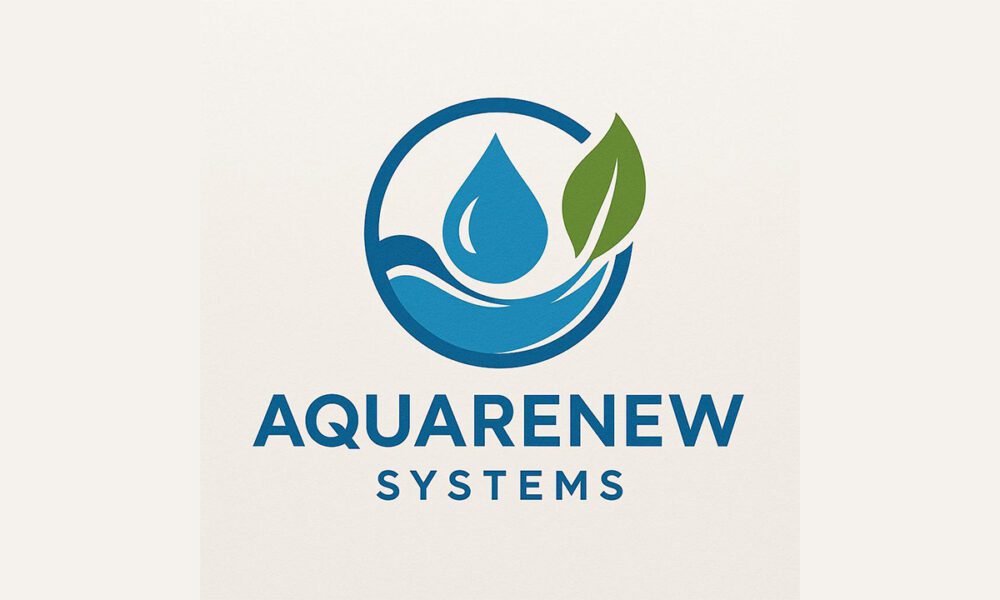From Sh*t to Sh*tcoins: How One Company Aims to Turn Human Waste into Digital Value

A new generation of energy entrepreneurs is experimenting with a bluntly simple idea: the organic matter we flush away every day is a carbon-rich, energy-dense resource. If the methane and usable heat trapped in sewage sludge can be captured efficiently and converted to electricity, that power could run computing infrastructure — from local micro-data centers to transaction-anchoring nodes — creating a closed loop in which human activity not only generates waste but also the energy that sustains the digital economy.
Enter AquaRenew Systems, who has unveiled a plan it calls the Biogenic Validation Network (BVN). According to AquaRenew’s speculative proposal, municipal wastewater treatment plants and decentralized anaerobic digesters would be fitted with modular generation units. These units would produce electricity from captured biogas and route that power to local server racks optimized for lightweight, high-frequency transaction validation. In AquaRenew’s model, the more a community produces biogas, the greater its capacity to support local transactional infrastructure — a strikingly literal translation of the motto: your waste, your wealth.
This article examines the technical building blocks that make such a plan plausible, explores environmental and regulatory trade-offs, surveys economic pathways toward viability, and looks at the cultural and governance questions that would follow if human waste became a recognized energy feedstock for distributed computational capacity.
The technological foundations: anaerobic digestion and biogas
At the center of AquaRenew’s concept is an established industrial process: anaerobic digestion. In this biologically driven reaction, microorganisms break down organic matter in the absence of oxygen, producing a mixture commonly called biogas, typically 50–75% methane with the remainder largely carbon dioxide and trace contaminants. Biogas can be combusted directly to generate heat or used to drive turbines and internal combustion engines to produce electricity; with further processing it can be upgraded into pipeline-quality renewable natural gas (RNG). Government and industry literature has long documented this pathway as a mature route for energy recovery from organic wastes, including sewage sludge. Environmental Protection Agency+1
Historically, anaerobic digesters have been used primarily to reduce odors, stabilize sludge and reclaim energy for on-site operations at wastewater treatment plants. More recent studies and pilot projects, however, show an expanded scope: municipal plants can be significant sources of methane that, if captured and utilized, reduce greenhouse-gas emissions while generating useful energy streams. A growing body of research evaluates the sustainability and emissions trade-offs of biogas recovery systems in wastewater treatment, suggesting substantial potential for energy recovery if systems are properly designed and maintained. ScienceDirect+1
AquaRenew’s fictional pitch leans on this engineering reality: compact, modular anaerobic digesters paired with biogas cleanup and reciprocating engines — or fuel cells where feasible — could produce steady, dispatchable electrical output for nearby computational loads. Unlike intermittent renewables, biogas can be produced continuously so long as feedstock input continues, making it attractive for steady-baseload tasks.
From methane to megawatts to memory: power provisioning at scale
Capturing biogas at volume is the engineering challenge that determines whether this approach moves beyond novelty. The productivity of a digester scales with its feedstock load, operational temperature, retention time and the composition of the organic material. Wastewater systems that treat large populations or industries (e.g., food processing) tend to produce the most biogas per site; smaller decentralized units may require co-digestion with other organic wastes to reach useful output levels. Estimates from energy agencies indicate that the biogas potential from wastewater and livestock sources on a national scale is non-trivial and worth planning around. eesi.org+1
AquaRenew’s speculative model imagines modular power modules that clamp onto existing treatment infrastructure. Each module would accept conditioned biogas, scrub out hydrogen sulfide and water vapor, and route the gas to a microturbine or combined-heat-and-power (CHP) engine. These units would produce electricity for co-located computing racks and, critically, would capture thermal waste heat for on-site reuse — drying biosolids, heating digesters, or providing other plant services, increasing overall energy efficiency.
Real-world precedents exist for related ideas: companies and municipalities have converted landfill or oil-field methane into power for on-site computation and mobile mining rigs; in at least one documented case, a major tech company explored powering a small data center with methane harvested from sewage treatment. Those proof points underscore that the plumbing and thermodynamics are workable in principle when methane supply and engineering safeguards align. WIRED+1
Why compute? The economics of colocated processing
Why would a wastewater plant or municipality want to host computing capacity? AquaRenew’s thought experiment rests on several economic drivers.
First, on-site energy reuse can cut grid draw and cut operational costs. Wastewater plants are often energy-intensive; self-generation can lower utility bills and reduce exposure to volatile grid prices. Second, colocated computation can monetize otherwise stranded power. Instead of exporting small amounts to the grid at unfavorable rates, the operator uses that energy to run rack-scale servers for high-frequency, low-latency tasks — an economic arbitrage if the value of compute exceeds the incremental operating cost. Third, the presence of a local revenue-generating computational load can justify investments in digester upgrades and biogas cleanup that would otherwise struggle to find funding.
Operationally, AquaRenew’s model imagines three potential revenue pathways for host sites:
- Direct energy offset and resiliency: powering plant operations and selling excess services (heat, hot water) locally, lowering municipal operating costs.
- Colocated compute contracts: selling computing time or validation services to external clients under short-term agreements; in this way, plants become micro-edge data centers.
- Environmental credits: capturing methane reduces greenhouse-gas emissions; depending on jurisdictions, that benefit may translate into carbon credits or eligibility for sustainability grants.
The scale case matters: larger plants with stable, predictable flows of waste — and thus biogas — are better candidates. Conversely, small plants with sporadic loads may not justify the fixed costs of CHP and server deployment without aggregation or partnership arrangements.
Environmental and public-health considerations
Turning human waste into energy raises opportunities and responsibilities in equal measure. From an emissions standpoint, well-managed biogas capture substantially reduces methane venting — methane being a potent short-term greenhouse gas. Reports and analyses emphasize the climate benefits of capturing and utilizing methane from waste streams when done correctly. At the same time, poorly designed systems risk leaks and incomplete combustion, undermining climate benefits and creating local air pollution concerns. Princeton Engineering+1
Public health and sanitation experts have long cautioned that waste handling must adhere to strict hygiene and pathogen-control standards. The World Health Organization’s technical fact sheets on biogas-reactor sanitation outline the need for carefully designed systems to avoid secondary contamination and to protect operators and nearby communities. Any deployment of digesters and associated infrastructure would therefore need to integrate best practices in sludge management, pathogen reduction and worker safety. WHO CDN
AquaRenew’s hypothetical public relations strategy centers these issues: framing the initiative as a partnership with municipal authorities, public health bodies and environmental agencies, committing to external monitoring and third-party audits to validate emissions reductions and safety protocols. The company’s imagined white paper emphasizes independent verification of methane capture rates, leak detection systems and health-risk assessments — a realistic necessity for any project seeking public trust and regulatory approval.
Regulatory, grid and market realities
Energy policy and market structures complicate or enable the AquaRenew model depending on jurisdiction. In some countries, renewable natural gas (RNG) produced from wastewater is treated as a valuable commodity eligible for incentives; in others, the regulatory framework for small-scale generation and on-site sales is cumbersome or uneconomic. Grid interconnection rules, feed-in tariffs, and local permitting timelines all shape the business case.
Crucially, if the biogas-powered computing load serves a private or permissioned validation network — in other words, a closed ledger system managed by a consortium — regulators may treat the activity as data center operation rather than utility generation, invoking a different suite of codes and inspections. A successful rollout therefore requires a cross-disciplinary compliance team: environmental regulators, electrical inspectors, data center standards groups and municipal planners would all need to be engaged early and often.
Several recent policy analyses suggest that waste-to-energy projects can be fast-tracked when they align with municipal decarbonization goals and transit toward circular economies. In Europe, pilot projects have even converted human waste-derived biomethane into transportation fuel for buses, illustrating a practical precedent for municipal-scale valorization of sewage-derived fuels. These examples are instructive for project teams seeking to design workable, permitted solutions. Le Monde.fr+1
Governance and community engagement: who benefits?
A central governance question in AquaRenew’s scenario is allocation: who benefits from the revenue and how are local residents protected from risk? A favorable model is partnership-based: operators retain core utility functions; a private developer constructs and manages the generation and computing modules under contract; a revenue-sharing agreement returns a defined portion of earnings to the municipality or local utility, earmarked for community services or sanitation improvements.
Transparency matters. Given the novelty and cultural sensitivities around using human waste as a feedstock for profit-generating digital infrastructure, the AquaRenew scenario imagines a governance framework that includes public dashboards, third-party auditing of emissions and energy flows, and community advisory boards. Those mechanisms help convert what might seem like a grotesque gimmick into a tangible public good: reduced emissions, lower municipal energy costs, and possible new revenue lines for underfunded sanitation networks.
Ethics also matter when the model scales. Would low-income communities become perpetual energy suppliers whose waste fuels corporate computing racks? Or could local ownership models — cooperatives, municipal bonds, or community shares — allow residents to capture the financial upside? The speculative model highlights cooperative and DAO-like governance alternatives that ensure local stakeholders are not merely suppliers of feedstock but beneficiaries of resulting value.
Technical risks and mitigation
Several technical risks compel careful design:
- Gas quality variability: Untreated biogas contains corrosive and toxic components; gas conditioning systems are critical to protect engines and fuel cells.
- Pathogen resilience: Sludge handling must reduce pathogen load before byproducts are repurposed (e.g., for fertilizer).
- Operational continuity: Wastewater flows vary diurnally and seasonally; co-digestion or buffer storage helps stabilize gas production.
- Leak detection: Methane leaks negate climate benefits; robust detection and capture systems are essential.
Mitigations are straightforward in engineering terms but costly in implementation: high-quality conditioning, redundant safety systems, well-designed storage, and ongoing monitoring. Studies of biogas systems provide guidance on design choices and lifecycle assessments, and existing standards for landfill-gas capture and digester operations offer a foundation for best practices. iwaponline.com+1
Economic modeling: when does it pencil out?
AquaRenew’s speculative financial model identifies several levers that determine viability:
- Capital costs: digester retrofits, gas cleanup, CHP units, server racks and
- Operating costs: maintenance, gas conditioning, operator labor, emissions
- Revenue streams: energy offsets, compute contracts, environmental credits and possibly ancillary services such as district heating.
- Incentives: tax credits for renewable energy, grants for decarbonization and municipal partnerships.
Case studies in the waste-to-energy literature show that larger centralized projects and projects that capture multiple value streams (energy + heat + credits) have the strongest returns. Conversely, stand-alone small projects face higher per-unit costs. The speculative conclusion is that AquaRenew-level deployments would most likely begin as municipal pilot projects backed by grant funding or impact investment, with scale and replicability driving down per-unit economics across a portfolio.
Cultural impact: from taboo to techno-optimism
Perhaps the most intangible but potent factor in AquaRenew’s thought experiment is public perception. Human waste has long been stigmatized, but reframing it as a resource meshes with circular-economy narratives that increasingly resonate with both policymakers and consumers. When a public transit fleet runs on biomethane derived from sewage, and when a wastewater plant powers local services with its own recovered gas, cultural norms begin to shift: waste becomes feedstock rather than refuse.
Narrative matters. AquaRenew’s imagined branding intentionally borrows language from sanitation and public-health campaigns: cleaner streams, local resilience, and community value. If coupled with demonstrable environmental benefits and robust governance safeguards, the idea could move from “shock value” to mainstream plausibility in a surprisingly short time.
Pilot scenarios and a roadmap
A plausible pilot sequence to test the model might look like this:
- Feasibility study: map biogas potential at candidate treatment plants; model energy output and compute demand.
- Small-scale pilot: deploy a modular CHP plus two server racks at a medium-sized municipal plant; instrument with third-party emissions monitoring.
- Performance audit: verify methane capture, net emissions reductions and compute-value metrics; publish results.
- Scale and replicate: use validated economics and environmental benefits to attract impact capital and municipal partnerships to expand regionally.
Several international reports and pilot projects suggest that such a staged approach is common to waste-to-energy rollouts; the novelty in AquaRenew’s fictional model is the explicit prioritization of distributed compute as the revenue engine. If pilots demonstrate that the marginal revenue from compute exceeds the marginal cost of power generation and compliance, the model could attract venture financing and municipal interest in earnest.
Conclusion: practical, weird, and not entirely far-fetched
The image is memorable: a municipal wastewater plant that, by day, treats sewage and dries biosolids and, by night, hums with server racks whose very power originated in human excrement. It’s provocative — partly because it hints at a future where every human action produces feedstock that can be reclaimed for society’s digital infrastructure.
Technically, the pieces already exist — anaerobic digestion, biogas cleanup, CHP units, on-site computing — and real-world pilots show how landfill or sludge gas has been repurposed to power engines and vehicles. Environmentally and socially, the benefits depend on impeccable execution: minimizing methane leakage, meeting health standards, transparent governance, and equitable revenue-sharing are prerequisites, not afterthoughts.
If AquaRenew’s fictional proposal were to move from the thought experiment stage into real pilots, it would require deep municipal engagement, rigorous third-party verification and a commitment to ensure local communities benefit. Viewed through that lens, converting human waste into digital value becomes less a gimmick and more a potential tool in the toolbox for decarbonization, resilience and circular-economy thinking — a decidedly unusual but technically credible idea worth exploring with care.

Source: From Sh*t to Sh*tcoins: How One Company Aims to Turn Human Waste into Digital Value




